Birds never cease to amaze us with their enchanting behaviors, and one such behavior that captures our attention is wing-spreading.
Whether it’s an eagle gracefully extending its wings or a tiny hummingbird displaying vibrant feathers, wing-spreading holds a significant place in the avian world.
In this article, we will embark on a journey to explore the fascinating world of bird wing-spreading behavior. We will uncover the various reasons behind this behavior, including thermoregulation, flight preparation, feather maintenance, and courtship displays.
Let’s then stop the intro talk and head toward the reason behind the bird’s wing-spreading behavior directly.
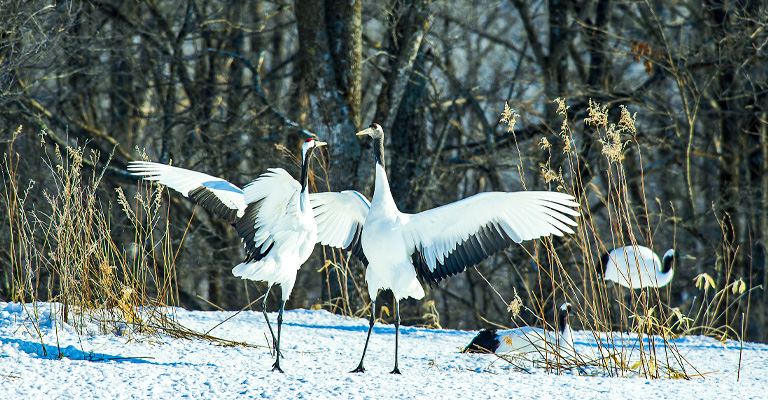
Sunbathing: Expose Wings to Seek Warmth and Regulating Body Temperature
Sunbathing is a behavior commonly observed in birds, where they extend their wings and expose themselves to the warmth of the sun. This behavior can be seen in various bird species, ranging from small songbirds to larger waterfowl.
When birds engage in sunbathing, they often spread their wings wide and may adjust their body posture to maximize sun exposure.
Exposing Wings to the Sun
The primary purpose of exposing their wings to the sun is to soak up its warmth. The sun’s rays provide birds with an external heat source, which they utilize to regulate their body temperature.
By spreading their wings and exposing the feathers to sunlight, birds can absorb the warmth and transfer it to their bodies.
Regulating Body Temperature for Birds
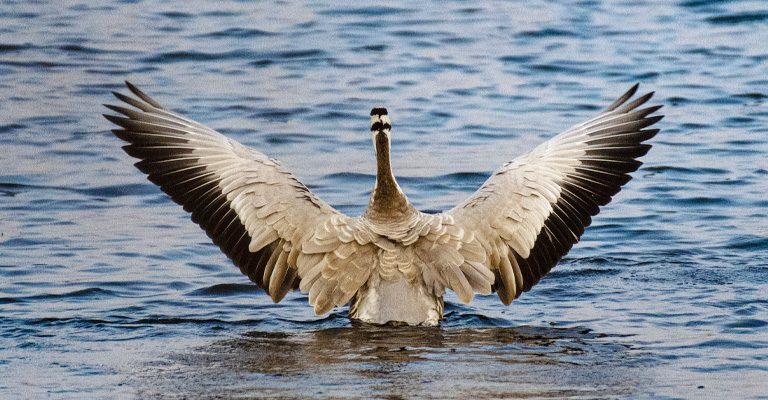
Regulating body temperature is vital for birds’ overall well-being. Birds are endothermic creatures, meaning they can internally regulate their body temperature.
Maintaining a stable body temperature is essential for various physiological processes, including metabolism, digestion, and overall energy expenditure.
Sunbathing allows birds to warm up their bodies, especially in cooler environments or after exposure to water, helping them maintain an optimal internal temperature.
Stretching: Maintaining Flexibility and Preparing for Flight
Stretching is a common behavior seen in birds, where they extend their wings, legs, and necks, often accompanied by a series of coordinated movements.
This stretching behavior helps birds work their muscles and joints, promoting flexibility and overall mobility.
Muscle and Joint Flexibility for Birds
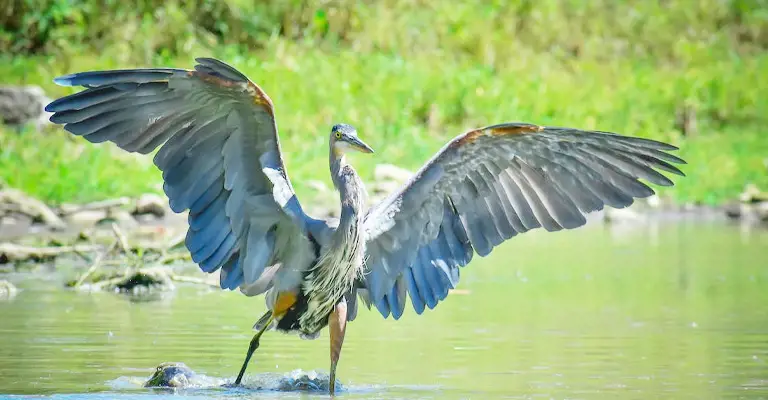
Maintaining muscle and joint flexibility is crucial for birds’ physical well-being and performance. Birds rely heavily on their musculoskeletal system for various activities, such as flying, perching, hunting, and even courtship displays.
Flexible muscles and joints allow birds to execute these movements with precision and efficiency, enabling them to adapt to different environmental challenges and maximize their survival chances.
Stretching in Preparing for Flight
Stretching plays a vital role in preparing birds for flight. Before taking off, birds need to ensure their wings and associated muscles are ready for the demanding task of flying.
Stretching helps warm up the flight muscles, improving their blood flow and oxygenation. It also aids in loosening any muscle stiffness that may have occurred during periods of rest or inactivity.
By engaging in stretching exercises, birds prime their wings and associated musculature for optimal flight performance.
Grooming: Feather Maintenance and Care
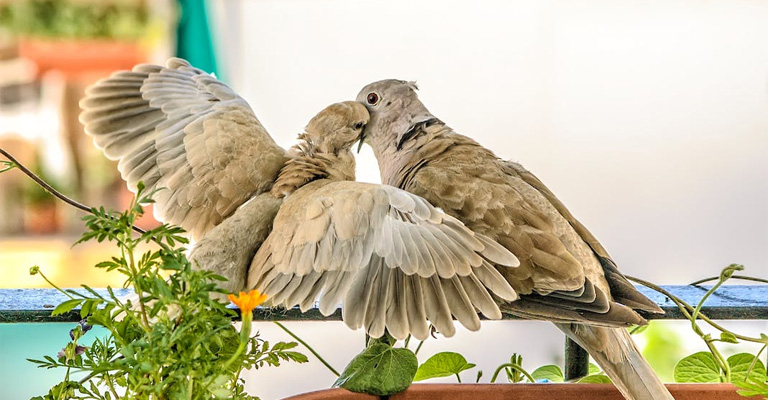
Grooming is an essential behavior in birds that involves various activities, such as preening, arranging feathers, and removing dirt or parasites.
Birds use their beaks to manipulate their feathers, carefully aligning each barb and interlocking structure to maintain the integrity of their plumage.
Significance of Preening and Arranging Feathers
Preening, a crucial aspect of grooming, involves the distribution of natural oils secreted by the uropygial gland located at the base of a bird’s tail.
These oils help waterproof and condition the feathers, preventing them from becoming waterlogged and improving their overall insulation properties.
Through preening, birds can evenly distribute these oils across their feathers, ensuring optimal waterproofing and maintaining their insulating capabilities.
Importance of Feathers for Insulation, Flight, and Display
Feathers play a vital role in a bird’s life, serving multiple functions. Firstly, feathers provide insulation, protecting birds from extreme temperatures and regulating their body heat.
Well-groomed feathers with intact interlocking structures create a layer of trapped air, acting as an effective insulator against both heat loss and excessive heat absorption.
Variations in Wing-spreading Behavior Among Bird Species
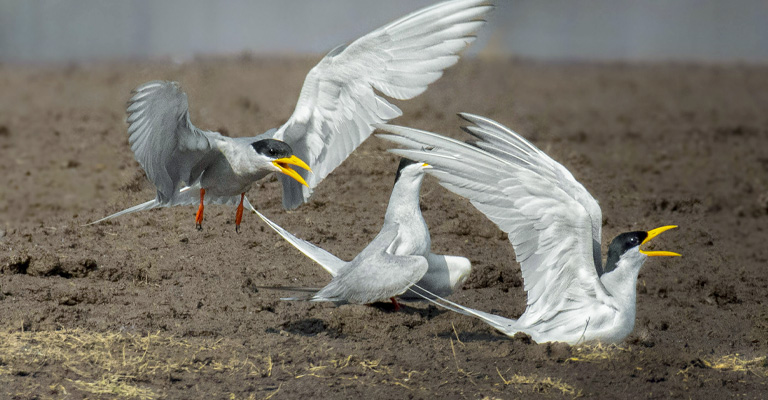
As I have already told you, the wing-spreading behavior is not the same in all different types of birds. It varies from species to species. Here is the explanation of their wing variations.
Different Bird Species Exhibiting Wing-spreading Behavior
Birds of Prey (E.g., Eagles, Hawks)
Many raptors, such as eagles and hawks, are known to spread their wings while perching or after taking off. This behavior is often associated with thermoregulation, as it allows them to bask in the sun and absorb heat, aiding in maintaining optimal body temperature for their active lifestyle.
Waterbirds (E.g., Herons, Cormorants)
Waterbirds, including herons and cormorants, frequently spread their wings after diving or swimming. This behavior helps them dry their feathers efficiently, preventing waterlogging and maintaining their insulation properties.
It is particularly crucial for species that rely on wetland habitats for feeding and nesting.
Seabirds (E.g., Albatrosses, Gulls)
Seabirds, such as albatrosses and gulls, often spread their wings while gliding or soaring over the ocean. Wing-spreading in these species is associated with maximizing flight efficiency and exploiting wind currents.
By extending their wings fully, they can optimize lift and minimize energy expenditure during long-distance flights.
Factors Influencing Variations in Behavior
Habitat and Environmental Factors
Different habitats offer varying conditions that influence the frequency and purpose of wing-spreading behavior.
Birds living in colder environments may engage in sunbathing to warm up and regulate body temperature, while those in wetland or marine habitats may prioritize feather drying and maintenance after water-related activities.
Evolutionary Adaptations
Wing-spreading behavior can be shaped by evolutionary adaptations to specific ecological niches. Birds that rely on flight as their primary mode of transportation may exhibit more elaborate wing-spreading behaviors to optimize flight performance.
These adaptations can include wing morphology, muscle structure, and behavioral instincts that facilitate efficient wing-spreading.
Social and Reproductive Factors
Some bird species display wing-spreading behavior as part of courtship displays or territorial defense. The spread wings may serve as visual signals to attract mates or deter rivals, emphasizing the importance of social and reproductive factors in influencing wing-spreading behavior.
Bird Species and Their Wing-spreading Behavior
| Bird Species | Habitat/Environment | Purpose of Wing-Spreading Behavior |
| Eagles | Various habitats | Thermoregulation and sunbathing |
| Hawks | Diverse habitats | Thermoregulation and sunbathing |
| Herons | Wetland habitats | Feather drying and maintenance |
| Cormorants | Wetland and marine habitats | Feather drying and maintenance |
| Albatrosses | Open ocean habitats | Flight optimization and wind utilization |
| Gulls | Coastal and marine habitats | Flight optimization and wind utilization |
| Peacocks | Forested habitats | Courtship display and mate attraction |
| Penguins | Antarctic and sub-Antarctic | Thermoregulation and feather drying |
FAQs
Spreading only one wing is commonly seen in birds during certain behaviors, such as stretching, preening, or displaying. This asymmetrical wing-spreading allows birds to focus on specific areas that require attention, such as grooming a particular wing or exposing a specific body part to the sun for thermoregulation.
While wing-spreading behavior is common among birds, not all species exhibit it to the same extent or in the same circumstances. The frequency and purpose of wing-spreading can vary depending on factors such as habitat, evolutionary adaptations, and specific behavioral needs of each bird species.
Yes, wing-spreading behavior is not limited to birds capable of flight. Flightless birds, such as penguins and ostriches, also engage in wing-spreading behavior.
In these species, wing-spreading may serve functions like thermoregulation, display, or balance during certain movements.
Generally, wing-spreading behavior is a natural and beneficial behavior for birds. However, there may be some risks or dangers associated with it in certain situations.
For example, when birds spread their wings near roads or other human-made structures, they might be at an increased risk of vehicle collisions or injury.
Additionally, wing-spreading behavior in exposed areas can make birds more vulnerable to predation. Birds are usually vigilant and assess their surroundings while engaging in wing-spreading to mitigate potential risks.
While humans may attempt to mimic bird wing-spreading behavior, it is unlikely to serve as a direct form of communication with birds. Birds rely on a complex system of visual, vocal, and behavioral cues specific to their species for communication.
Mimicking wing-spreading may not be recognized or understood by birds in the same way as their own behaviors are.
Bird wing-spreading behavior has been depicted in various cultures and symbolizes different meanings. In some contexts, it may represent freedom, expansiveness, or a connection to the spiritual realm.
Different cultural interpretations and symbolic associations can vary widely, depending on the specific cultural beliefs and traditions.
Conclusion
Wing-spreading behavior among birds is a fascinating and diverse phenomenon. It serves various purposes depending on the species and the context in which it occurs.
Birds engage in wing-spreading for thermoregulation, feather maintenance, flight optimization, courtship displays, and even communication with conspecifics.
The examples provided, such as eagles, herons, albatrosses, and peacocks, demonstrate the range of species and habitats in which this behavior can be observed.
Hopefully, you have got my point. For further inquiries, you can ask me questions in the comment section. Thank you.